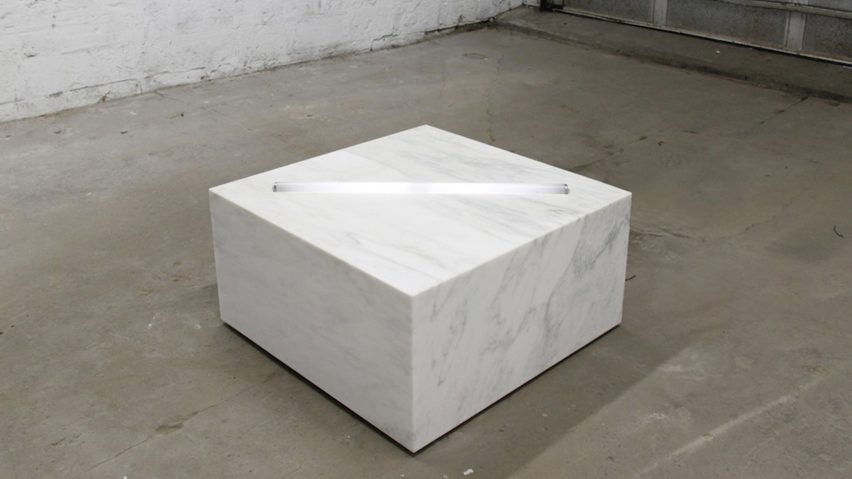Toronto-based industrial design studio Castor has managed to induce an electric current through a 2,500-pound marble slab, causing a glow from a fluorescent tube simply laying on its top.
The studio's experiments with electromagnetic induction have resulted in several designs, all based on the same principle.
An electromagnetic field is produced by a coil housed within a marble block, which stimulates the gases contained in a fluorescent bulb in contact with the stone. This causes it to illuminate without the metal pins connected to a power source.
"Based in part on the experiments of inventor Nikola Tesla, this sculpture is situated somewhere between engineering and fine art," said Brian Richer of Castor.
"The marble base houses a circuit that stores an electric current within a magnetic field, which is then transferred into the fluorescent bulb."
The first in the series, named Marble with Fluorescent Tube, comprises a monolithic slab of marble with a channel carved into its top to accommodate a tube light. Only three editions were made, one in black marble and the others in white.
"A fluorescent bulb is normally lit through a connection at its pins, but a closer examination of the sculpture reveals that the bulb is lit even though its pins are disconnected," Richer said.
"The power excites the gases within the bulb, resulting in light," he continued. "Since it's lit through a magnetic field, the bulb will continue to emit light when lifted several inches away from the base."
According to the designers, the geometry of the lamp base draws inspiration from minimalist sculptors such as Donald Judd and Carl Andre. However, the marble used is a reference to more classical forms or sculpture.
Castor extended these prototypes into a series called Induction Tube Light. The same principles are applied to off-the-shelf, six-foot (180-centimetre) and 17-inch (45-centimetre) bulbs that can be used as floor or desk lamps.
A video produced by the studio demonstrates the process. The short clip shows how the bulb lights up before fully in its base, while images reveal that the light's intensity is greater near the base – indicating its unusual power source.
Unlike the larger piece, the Induction Tube Lights sit on a base that is only four inches (10 centimetres) across, made of milled steel and finished with a black powder coating. They retail for $1,150 USD (£820), and are available from Castor's online store.
Other lighting designs to come out of Canada recently were shown at IDS Toronto in January 2018, when we selected five of our favourites.
Photography is courtesy of Castor.

